When it comes to duck hunting, having the right decoys can make all the difference. To help you choose the best decoys for a successful hunting experience, we have compiled a list of the top 5 duck decoy companies, along with their top 3 decoys and why they are preferred by hunters. With these high-quality decoys in your arsenal, you’ll be well-equipped to attract and bag more ducks on your next hunting expedition.
Avian-X
Avian-X is a renowned brand known for its lifelike and realistic decoys. The brand was created by a group of passionate hunters who wanted to change the game in terms of realism and effectiveness in decoy design. They combine cutting-edge technology with years of field experience to produce innovative and lifelike decoys that attract more waterfowl. Avian-X offers a wide range of decoys designed to mimic a variety of duck species, each with unparalleled detail and realism. They also offer various poses and positions to create dynamic and convincing spreads that lure in wary ducks. With Avian-X, hunters can expect to experience unparalleled success on their hunts by bringing in more birds. The company prides itself on using only the highest-quality materials to ensure durability and longevity in their decoys, making them an investment that hunters can depend on season after season. Here are Avian-X’s top 3 decoys:
Avian-X Topflight Backwater Mallards

Avian-X Topflight Backwater Mallards are the ultimate choice for hunters targeting mallards in marshes, shallow water, or backwater areas. These decoys are specifically designed to mimic the natural postures and movements of mallards in these unique hunting environments. The Backwater Mallard decoys feature realistic paint schemes, intricate feather details, and lifelike body postures that make them virtually indistinguishable from live mallards. The attention to detail on these decoys is unmatched, allowing you to create an incredibly convincing spread that will attract even the most cautious ducks. Whether you’re hunting in flooded timber or small wetland areas, the Avian-X Topflight Backwater Mallards are sure to enhance your hunting success by bringing mallards in close for the perfect shot.
Avian-X Topflight Pintails

Avian-X Topflight Pintails are a must-have for any serious duck hunter. These decoys are meticulously crafted to replicate the unique features and behavior of pintail ducks with extraordinary accuracy. Their lifelike body postures and vivid paint schemes make them virtually indistinguishable from real pintails. The attention to detail, from the intricate feather patterns to the realistic eyes, is truly remarkable. These decoys draw in pintails from a distance, enticing them with their authentic appearance. With Avian-X Topflight Pintails in your decoy spread, you’ll have the confidence and edge needed to attract more pintails and increase your chances of a successful hunt.
Avian-X Topflight Canvasbacks

Avian-X Topflight Canvasbacks are a top-of-the-line choice for hunters targeting these elusive diving ducks. Known for their striking appearance and swift flight, canvasbacks can be a challenge to lure in. However, Avian-X has gone above and beyond to create incredibly realistic decoys that capture the unique characteristics of these birds. The Topflight Canvasbacks feature meticulously painted details that perfectly replicate the distinctive coloring, patterns, and feather textures of live canvasbacks. The attention to detail extends even to the realistic head positions and body postures, ensuring that these decoys look convincingly lifelike in the water. Whether you’re hunting in open water or along the shore, the Avian-X Topflight Canvasbacks are designed to maximize visibility and attract canvasbacks from a distance. With these decoys in your arsenal, you can significantly increase your chances of a successful canvasback hunt.
Flambeau Outdoors
Flambeau Outdoors is another trusted name in the duck decoy industry, celebrated for its innovation and top-quality products. Their decoys combine durability and realism, making them a favorite among hunters. Flambeau Outdoors is a renowned company that specializes in manufacturing high-quality outdoor products and gear. With a rich history that spans over seven decades, Flambeau is dedicated to providing innovative solutions for outdoor enthusiasts. Their hunting decoys, in particular, are highly regarded for their lifelike appearance and realistic features, making them a favorite among hunters. Whether you’re a seasoned hunter or a novice adventurer, Flambeau Outdoors offers a wide selection of products that are designed to enhance your outdoor experience and help you succeed in the field. With Flambeau Outdoors, you can trust that you are investing in top-quality gear that will withstand the demands of the great outdoors. Here are Flambeau Outdoors’ top 3 decoys:
Flambeau Gunning Series Mallard Decoys

Flambeau Gunning Series Mallard Decoys are a popular choice among duck hunters. These decoys are designed with attention to detail and realistic features that make them almost indistinguishable from live mallards. Made of sturdy plastic, the Flambeau Gunning Series Mallard Decoys are both durable and lightweight. They come in a variety of poses, including swimmers, feeders, and high-head drakes, making for a varied and dynamic spread. They have vibrant, non-glare paints that are both water-resistant and durable. These decoys are the perfect tool to convince mallards that your hunting area is safe and appealing. With Flambeau Gunning Series Mallard Decoys in your spread, you can expect to attract more mallards and to get closer to them than ever before.
Flambeau Master Series Mallard Decoys

The Flambeau Master Series Mallard Decoys are the epitome of realism and effectiveness in waterfowl hunting. Each decoy in this series is meticulously crafted to replicate the natural appearance and behavior of live mallards. The attention to detail is remarkable, with intricate feather patterns, lifelike body postures, and vibrant paint schemes that mimic the subtle nuances of mallards in various stages of flight and landing. These decoys are made from durable and lightweight materials, ensuring that they can withstand the harsh conditions of any hunting expedition. The Flambeau Master Series Mallard Decoys also feature removable heads, allowing hunters to customize their decoy setup and simulate different poses and positions to deceive even the most wary ducks. With their unparalleled realism, these decoys create an irresistible allure that will attract mallards from afar, increasing your chances of a successful hunt. Whether you’re a seasoned waterfowl hunter or a passionate beginner, the Flambeau Master Series Mallard Decoys are the ultimate choice for enhancing your hunting experience and bringing more ducks into range.
The Storm Front Classic Mallard decoys excel in replicating the natural appearance and behavior of live mallards. The ultraviolet (UV) paint replicates the reflective properties of real feathers, creating an additional layer of realism that can fool wary ducks. With their versatility and affordability, these decoys are a popular choice for both experienced and novice hunters.
Flambeau Storm Front 2 Wigeon Decoys
The Flambeau Storm Front 2 Wigeon Decoys are a true game-changer when it comes to waterfowl hunting. These decoys are designed to perfectly replicate the natural coloring, feather patterns, and body postures of wigeons – a diving duck species known for its elegance and agility in the water. Each decoy in this set is expertly crafted and hand-painted to accurately simulate various poses and flight positions, creating a lifelike and convincing effect that will attract wigeons from a distance. The decoys are made with Flambeau’s proprietary polymer blend material, ensuring they hold up well in any hunting conditions. They feature a weighted keel and anchor points, which provide stability in the water and prevent rotation during high winds or strong currents. For added convenience, the Storm Front 2 Wigeon Decoys also feature a realistic high-definition paint scheme, which resists chipping and fading over time. If you’re looking for premium quality wigeon decoys that will optimize your hunting results and withstand the test of time, the Flambeau Storm Front 2 Wigeon Decoys are an excellent choice.
Higdon Decoys
Higdon Decoys is a leading company in the waterfowl industry. Based in Kentucky, USA, the company specializes in creating high-quality and realistic decoys that are designed for maximum hunting success. Higdon Decoys offers a wide range of decoy types, including duck, goose, and turkey decoys, as well as various accessories such as motion decoys, wobble bases, and jerk strings. The company takes pride in using only the highest quality materials and innovative manufacturing techniques to create lifelike decoys with exceptional durability. The decoys are designed by professional hunters to reflect the latest advancements in hunting strategies, and the company frequently collaborates with experienced hunters to develop new products for improved hunting outcomes. From the Higdon Magnum Mallard Duck Decoys to the Full-Body SuperMag Snow Goose Decoys, Higdon Decoys is committed to providing hunters with reliable, effective, and top-quality decoys that can withstand the rigors of frequent use in the toughest hunting conditions. Here are Higdon Decoys’ top 3 decoys:
Higdon Magnum Mallard Duck Decoys

The Higdon Magnum Mallard Duck Decoys are among the most realistic and effective decoys available on the market today. These decoys are designed to replicate the size, shape, and coloring of live mallard ducks, providing an incredibly lifelike appearance that ensures maximum attraction of real ducks. They are made from high-quality materials and feature detailed feather patterns that create a seamless illusion. Additionally, the decoys have vibrant paint schemes that can withstand heavy use and exposure to the elements. The Magnum Mallard Duck Decoys are also equipped with weighted keels that provide stability, promote natural movement in the water, and have anchor points for easy setup and placement. For added convenience, the decoys come in four unique body postures to add variety and realism to your spread. With their unmatched realism and attention to detail, the Higdon Magnum Mallard Duck Decoys are a top choice for serious waterfowl hunters who want to improve their success rate and add a touch of authenticity to their hunting experience.
Higdon Standard Redhead Duck Decoys

The Higdon Standard Redhead Duck Decoys are a top choice for waterfowl hunters seeking a realistic and effective decoy setup. This pack includes 12 Redhead duck decoys, each meticulously designed to replicate the size, shape, and coloring of Redhead ducks, ensuring a lifelike appearance that will attract even the most discerning ducks. The decoys are made from high-quality materials and feature vibrant paint schemes that are resistant to fading, ensuring long-lasting use. Their weighted keels and anchor points provide stability and allow for easy setup and positioning. The realistic body postures of these decoys add variety to your spread, enhancing the overall effectiveness of your hunting setup.
Higdon Outdoors Standard Ringneck Duck Decoys

The Higdon Outdoors Standard Ringneck Duck Decoys are a reliable and effective tool for waterfowl hunting enthusiasts. These decoys are specifically designed to replicate the appearance of Ringneck ducks, with meticulous attention to detail in color, feather patterns, and body shape. The foam-filled construction ensures durability and buoyancy, providing a lightweight yet sturdy decoy that can withstand rough water conditions. The decoys come with weighted keels and anchor points, allowing for easy setup and ensuring stability in the water. This lifelike setup, combined with the decoys’ realistic paint schemes, creates an irresistible attraction for Ringneck ducks, luring them into shooting range. The Higdon Outdoors Standard Ringneck Duck Decoys offer hunters an excellent decoy option that is built to last, providing both functionality and realism for a successful hunting experience.
Dakota Decoy Company
Dakota Decoy Company is a reputable and innovative company in the hunting industry. With a focus on premium and realistic decoys, the company has gained recognition among serious waterfowl hunters. Based in North Dakota, USA, Dakota Decoy Company prides itself on producing high-quality decoys that mimic the appearance and movement of various waterfowl species. From mallards to snow geese, their decoys exhibit exceptional attention to detail, ensuring a lifelike and convincing look. The company utilizes advanced manufacturing techniques and durable materials to create decoys that withstand the rigors of the field. Dakota Decoy Company is committed to continual improvement, constantly innovating and enhancing their products to provide hunters with even more effective hunting tools. With their dedication to quality and realism, Dakota Decoy Company has become a trusted name in the hunting community, delivering reliable and top-notch decoys that help hunters achieve optimal hunting success. Here are Dakota Decoy Company’s top 3 decoys:
Dakota X-Treme Mallard Decoys

The Dakota X-Treme Mallard Decoys are a game-changer for avid waterfowl hunters. These decoys, designed by Dakota Decoy Company, are specifically crafted to replicate the appearance and behavior of mallard ducks with unmatched realism. Each decoy is meticulously hand-painted, showcasing intricate feather patterns and vibrant colors that accurately simulate the look of live mallards. The attention to detail extends to the decoys’ body postures, which mimic various natural positions, adding depth and authenticity to your spread. Made from durable materials, these decoys are built to last and can withstand the toughest hunting conditions. The pack includes both hens and drakes for a balanced and diverse presentation. Thanks to their weighted keels, these decoys stay stable and perform convincingly in the water, even in the face of wind and waves. Increase your hunting success with the Dakota X-Treme Mallard Decoys, the epitome of lifelike realism and durability in the field.
Dakota Decoy Signature Series Upright Geese

The Dakota Decoy Signature Series Goose 6-Pack, the ultimate solution for waterfowl hunters seeking ultra-realistic and effective goose decoys. Made from durable EVA plastic, these decoys boast a one-piece body design that enhances their durability and resilience in harsh hunting conditions. With a meticulously designed mix of postures including one sentry, three walking actives, and two relaxed actives, this package provides a dynamic and ultra-realistic appearance that is bound to attract a wide range of waterfowl. The inclusion of the Wind Walker Motion Base allows the decoys to move naturally, increasing their appeal and successfully luring wary geese to your location. Additionally, the base eliminates the need for staking the decoys into the ground, further streamlining your hunting setup. The Dakota Decoy Signature Series Goose 6-Pack offers hunters a high-quality and innovative tool for a successful and productive hunting experience.
Dakota X-Treme Blue-Winged Teal Decoys

The Dakota X-Treme Blue-Winged Teal Decoys, a must-have for waterfowl hunters who are targeting these fast-flying and elusive ducks. These decoys are specifically designed to capture the unique characteristics and essence of Blue-Winged Teal with unparalleled detail. The attention to detail is evident in the decoys’ intricate feather patterns, vibrant colors, and realistic body postures that reflect the natural movement and behavior of these agile ducks. Crafted using the highest-quality materials, these decoys are built to withstand the challenges of the field, ensuring long-lasting performance season after season. The pack includes both drakes and hens, allowing you to create a balanced and convincing spread that will attract Blue-Winged Teal from a distance. Featuring weighted keels, these decoys stay securely anchored in the water, mimicking the tranquility and confidence of real Blue-Winged Teal. Elevate your waterfowl hunting experience with the Dakota X-Treme Blue-Winged Teal Decoys, the ultimate choice for dedicated hunters seeking to replicate the magic and excitement of hunting these speedy and beautiful birds.
Final Approach
Final Approach is a well-known manufacturer of high-quality, innovative, and field-proven hunting gear and accessories for waterfowl and other game bird hunters. Established in 1993, the company has dedicated itself to providing hunters of all skill levels with the gear and tools needed to achieve their hunting goals. At Final Approach, they have a deep understanding of the demands that hunters face when searching for game, which is why they have designed and tested their products to meet or exceed the needs of modern hunters. Their selection of hunting gear includes decoys, blinds, bags, accessories, and more, all made to the highest standards of craftsmanship and quality. By constantly innovating, experimenting, and perfecting their products, Final Approach has earned its place as a trusted provider of hunting gear for seasoned and new hunters alike.
Final Approach Last Pass Mallard Decoys
Final Approach Last Pass Mallard Floaters is a remarkable decoy that combines affordability with exceptional craftsmanship. These decoys are meticulously painted, providing a stunning and lifelike appearance that is sure to deceive even the most cautious waterfowl. Designed to be lightweight and compact, they are the ideal choice for hunters who need to traverse long distances to their hunting spots or are looking to maximize the number of decoys they can carry in a mesh bag or small boat. Built with the same rugged construction and durability as the renowned Live Series Mallards, these decoys are built to withstand the rigors of the hunting season. The new carvings, created by the 17-time World Champion Pat Godin, further enhance their authenticity and overall appeal. With their one-piece design, weighted keel, and cord lock system, these decoys ensure stability and ease of use. The 12-pack includes a balanced mix of 6 drakes and 6 hens, allowing hunters to create a diverse and enticing spread. Trust in the Final Approach Last Pass Mallard Floating Duck Decoys, 12 pack, or simply known as the Last Pass Mallard Floaters, to elevate your hunting game and attract waterfowl like never before.
Final Approach HD Blue Wing Teal Floater Decoys
The Final Approach HD blue wing teal decoys are the real deal, crafted with an unparalleled attention to detail that’s a testament to the new era of excellence in decoy craftsmanship. You’ll be amazed at the intricately sculpted heads and meticulously painted tails – they’re so realistic, they’ll make you do a double-take! If you’re looking for an effortless way to add some variety to your decoy spread and attract teal and other waterfowl, these decoys are a total game-changer. Designed for early season decoy spreads when these early birds are still around in many states, they’re the perfect choice for hunters who want to create a diverse and visually appealing spread that’s sure to catch the eye of passing waterfowl. With a 12-pack that includes a mix of 8 drakes and 4 feeder hens, you’ll have everything you need to create a dynamic decoy spread that’s bound to increase your chances of a successful hunt. So, grab your hunting buddies, set up around a campfire, and get ready to elevate your waterfowl hunting game with the Final Approach HD Bluewing Teal Floater Duck Decoys!
Final Approach HD Greenwing Teal Floater Decoys

Experience the excellence of the Final Approach HD Greenwing Teal Floater Duck Decoys – a game-changer for waterfowl hunters. With unmatched detail, these decoys bring your spread to life and attract teal or add variety. The 12-pack includes 8 drakes and 4 hens, crafted from premium plastic with a realistic, one-piece design. Expertly carved by Wayne Simkin, they blend seamlessly into their surroundings. Upgrade your spread with the Final Approach HD Greenwing Teal Floater Duck Decoys for a successful and unforgettable hunt.

With the variety of options available, choosing the right duck decoys can be overwhelming. The top 5 duck decoy companies highlighted in this article offer some of the best decoys for successful hunting experiences. Whether you’re targeting mallards, canvasbacks, scaup, teal, or Canada geese, these decoys deliver on realism, durability, and effectiveness. Each company offers a range of high-quality and effective decoys that cater to different hunting needs and preferences. Whether you choose Avian-X, Flambeau Outdoors, Final Approach, Higdon Decoys, or Dakota Decoy Company, you can trust that their top-decoys will enhance your hunting experience by attracting more ducks to your spread. Invest in these premium decoys and get ready for more successful hunts ahead. Happy hunting!



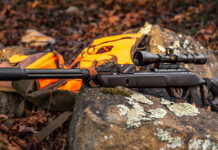
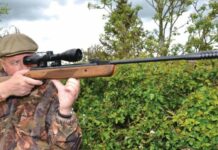
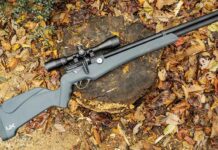
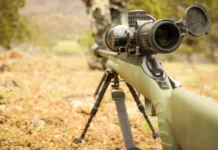
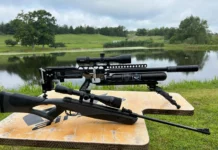

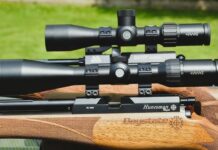
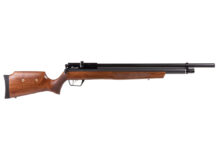
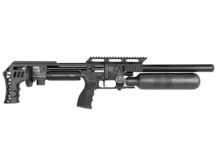
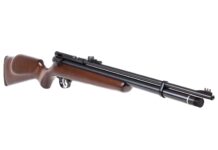
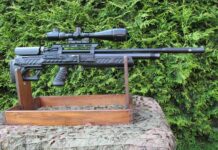
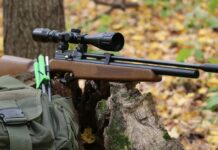
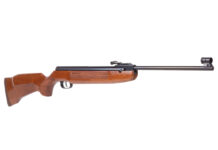
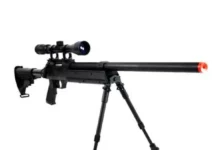
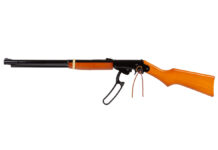
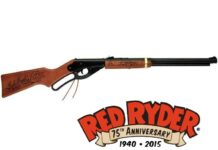
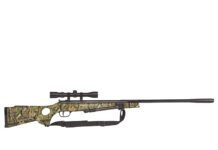
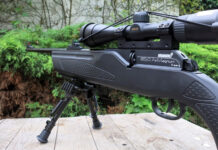
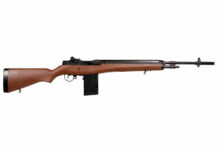
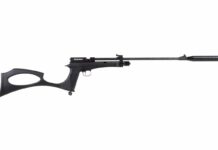
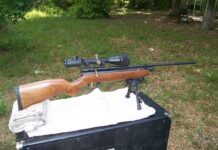


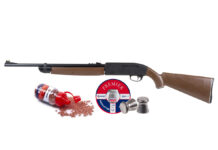


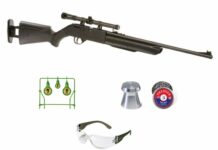
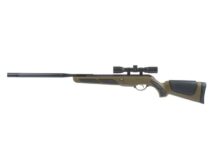
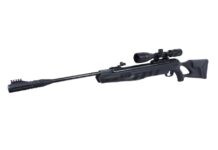
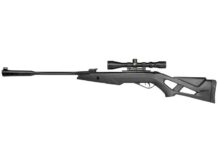
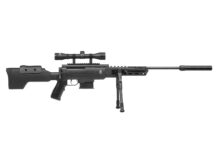
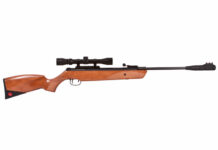






![Air gun 101: The differences between .177 & .22 – Which jobs they do best ? [Infographic]](https://airgunmaniac.com/wp-content/uploads/2024/11/1773-150x150.jpeg)

